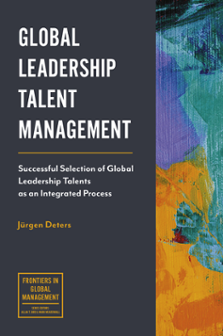GCI. See Global Competencies Inventory (GCI)
GLAC. See Global leadership assessment center (GLAC)
Global Competencies Inventory (GCI)
, 169, 170
Global corporate culture and value system
, 42
Global IT integration principle
, 29
Global leadership
, 81
competencies
, 77
assessments
, 169–171
collection of success factors
, 79–80
competencies category
, 84–85
congruence of competencies
, 83–84
dimensions for global leadership programs
, 80–81
performance
, 77–78
“soft” qualities
, 81–82
tests for
, 164–166
potential appraisal
, 159
harmonized appraisal framework
, 161–164
process criteria
, 160
technical knowledge
, 160–161
selection
, 1
acquisition
, 5, 6
best practice
, 8
culturally diverse upper management team
, 3–4
high-quality acquisition process
, 6
high-quality strategic talent acquisition approach
, 7
holistic approach
, 7
MNEs
, 4
SME
, 1
strategic talent acquisition
, 4–5
strategically oriented global acquisition
, 3
talent demand-supply gap
, 2
tests
, 167
cultural difference assessments
, 167–168
global leadership competency assessments
, 169–171
intercultural adaptability assessments
, 168–169
Global leadership assessment center (GLAC)
, 150, 180
assessed competencies
, 181–182
assessors
, 182–183, 184
core competencies
, 187–188
cross-cultural and job-specific IAC
, 180–181
culture-specific and job-specific IAC
, 180
global competency model
, 186–187
language
, 185
methodology
, 186
simulations, exercises, and tasks
, 184–185
Global leadership competency models
, 111, 119–121, 161–164
ALC leadership competency model
, 115–116
competency management
, 113–114
organization
, 111–112
other competencies
, 112–113
structure of
, 118
universal competency model
, 117
See also High-quality competency model
Global leadership talent acquisition
, 17, 20, 30
holistic view benefits in
, 17
global integration
, 17
HR actions
, 19
traditional HRM
, 18
organizational effectiveness and efficiency in
, 191–192
success factors and principles
, 28–30
Global leadership talent(s)
, 14
attracting and mobilizing
, 22
EVP
, 23
global employer brand
, 24
global HR professionals
, 24
platform functions
, 25
inventories
, 157
people development
, 16
retaining
, 27
selection
, 25–27, 188, 189
fairness
, 123–125
“hard” economic criteria
, 122
justice in global talent acquisition processes
, 129–132
legal aspect
, 132–133
psychological contract
, 125–126
social validity
, 126–129
structure of global leadership talent interview
, 172–178
succession planning for
, 20
global HR
, 22
key positions
, 21
strategic process
, 20
talent acquisition
, 14
views and definitions
, 15–16
Global talent acquisition processes
fairness
, 123–125
“hard” economic criteria
, 122
justice in global talent acquisition processes
, 129–132
legal aspect
, 132–133
psychological contract
, 125–126
quality standards
, 54
social validity
, 126–129
Global talent selection process
, 139–141
